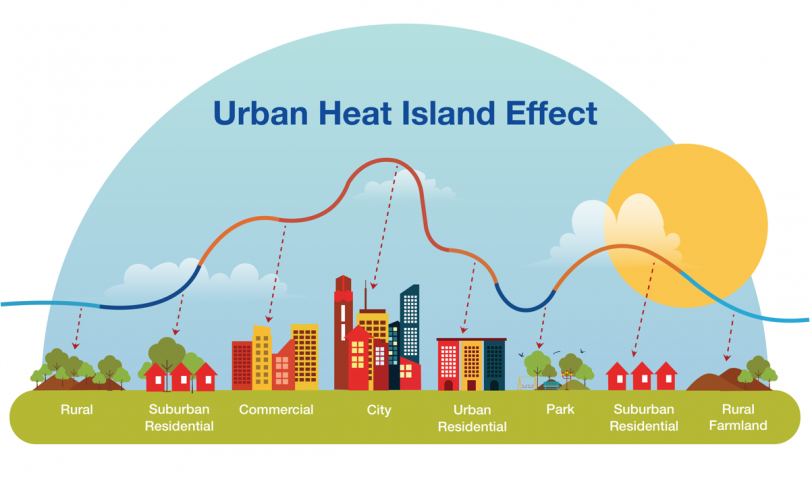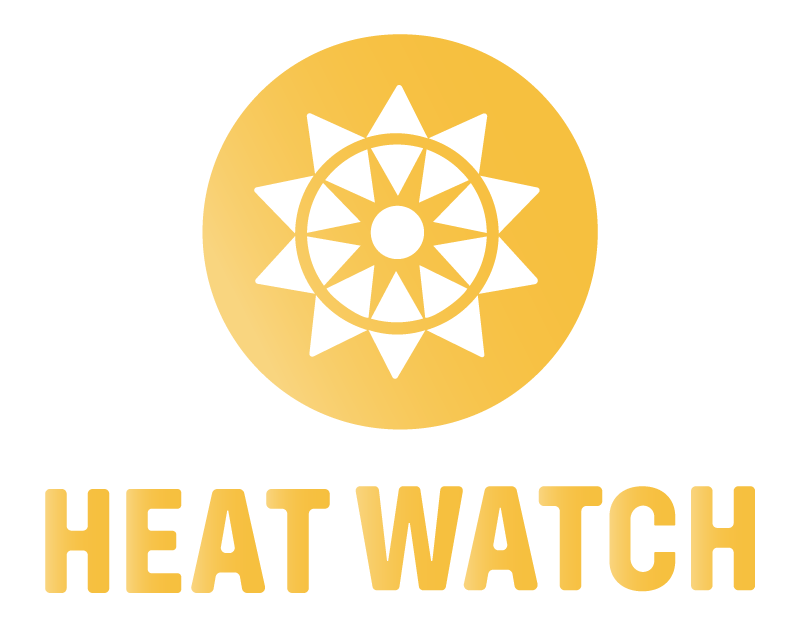Urban Heat Islands
Extreme heat intensifies in developed areas with many buildings and roads, but few trees or green spaces. In these areas, heat gets stored by unshaded concrete and asphalt, which then radiate heat back into the air and cause the temperatures to be 15°F to 20°F warmer in "urban heat islands."

Heat Island Mapping Campaign
The City of Little Rock, along with 18 other communities across the country, collected heat data across the community during a Heat Watch campaign on August 19th, 2023. The Little Rock Sustainability Office gathered a team of experts from METROPLAN, Central Arkansas Water, UAMS, and the National Weather Service to help coordinate the collection of ground-level heat data and educate the public on extreme heat. In an urban environment, factors like reduced tree coverage, air flow, heavy traffic, and the density of buildings can create “islands” of higher temperatures relative to surrounding areas. Identifying these pockets of heat, called urban heat islands, helps local decision-makers and neighborhood leaders take action to reduce the environmental, economic, and public health impacts of extreme heat, which often target the most vulnerable. Funding for this campaign came from NOAA and NIHHIS.
During this one day campaign, three shifts of volunteers traveled routes with heat sensors on their cars in the morning, midday, and evening. Each sensor recorded temperature, humidity, time, and location. This information is being analyzed and visualized as a map to give Little Rock residents and government officials a clearer picture of the heat island effect in Little Rock. The City and its partners will use this heat map to improve Little Rock’s heat mitigation and safety strategies.



Extreme Heat & Health Impacts
Climate change is bringing more days (and nights) with extremely high temperatures. Extreme heat is one of the most deadly climate hazards. In Little Rock, extreme heat is often accompanied by high humidity. Under these conditions, the human body needs to work harder to maintain a normal body temperature because the evaporation of sweat is slowed. This leads to heat exhaustion, heat stroke and possibly death. Anyone can be affected by extreme heat, but the hazard often disproportionately impacts low-income communities. Climate change is projected to increase the number, severity and duration of extreme heat events. Future public health consequences of extreme heat are likely to increase, but adaptation and mitigation steps can improve outcomes.
The graph below shows the increase in projected number of days per year that will be above 100°F in Pulaski County. Source: The Climate Explorer





 Trash & Recycling
Trash & Recycling
 Online Payments
Online Payments
 City Documents
City Documents
 Parks
Parks
 Traffic Court
Traffic Court
 E-NEWS
E-NEWS
 EXPLORE
EXPLORE
 NEWS
NEWS
 TRANSLATE
TRANSLATE
